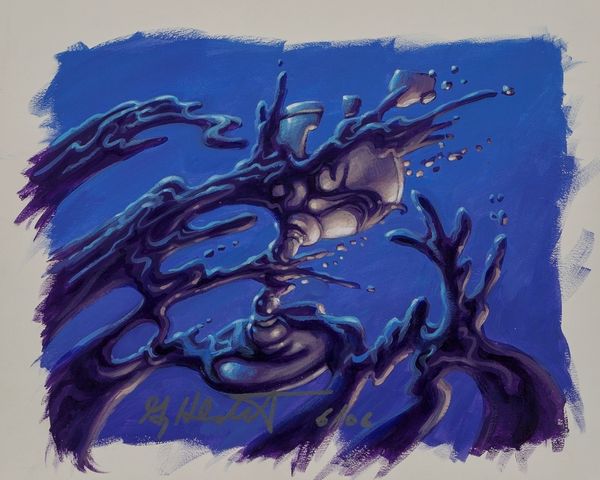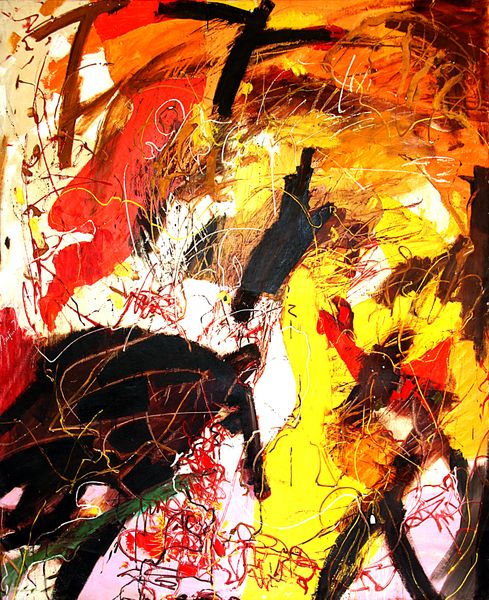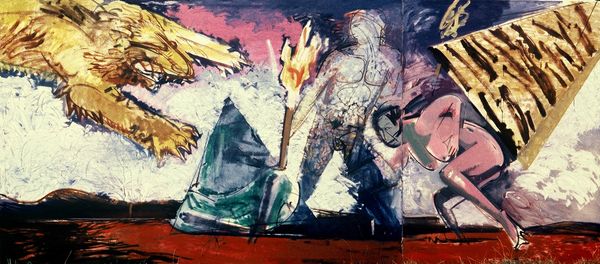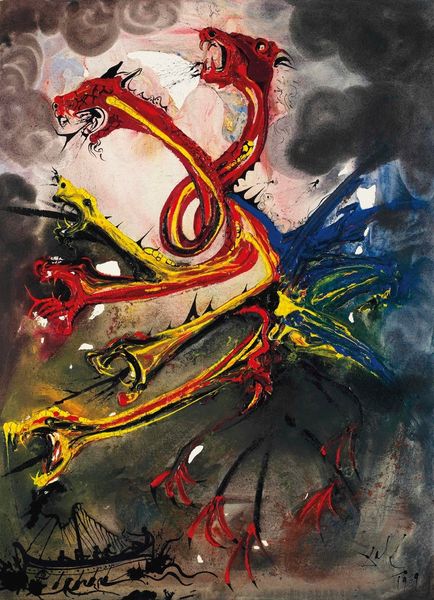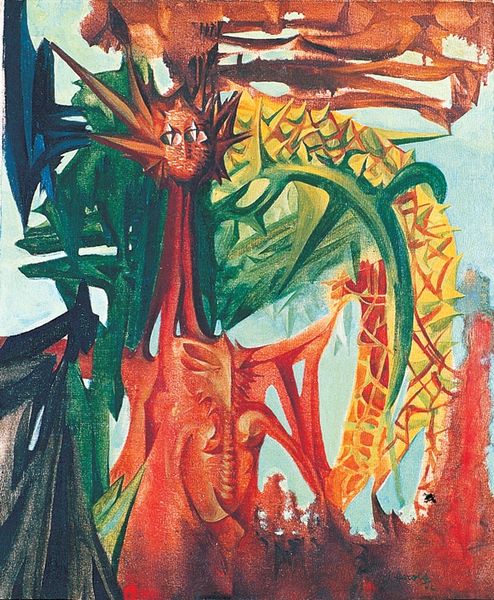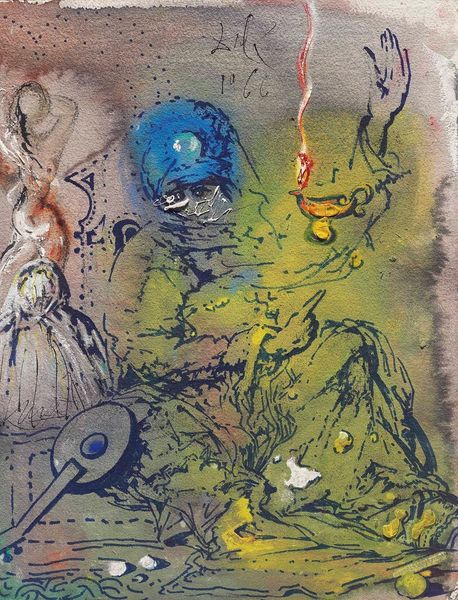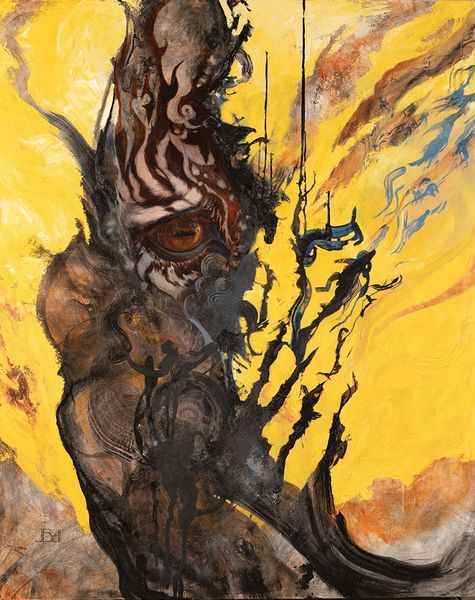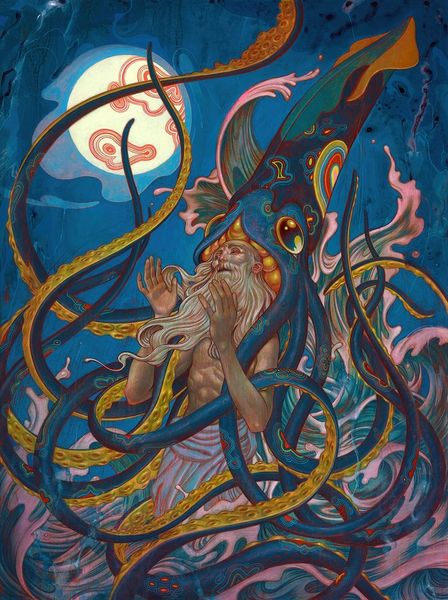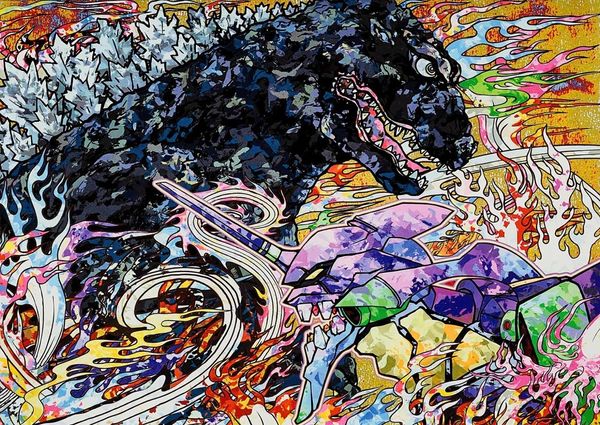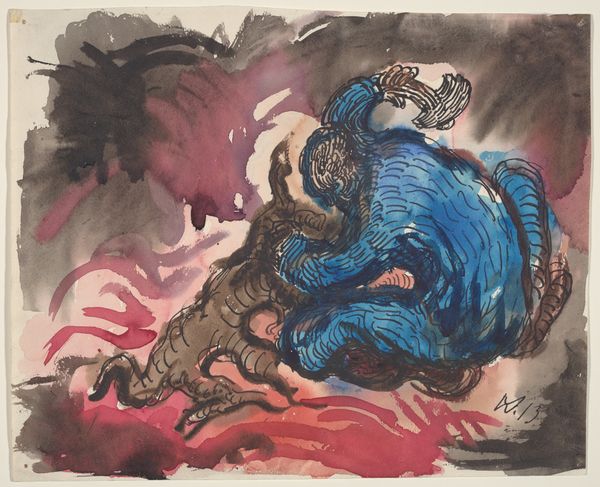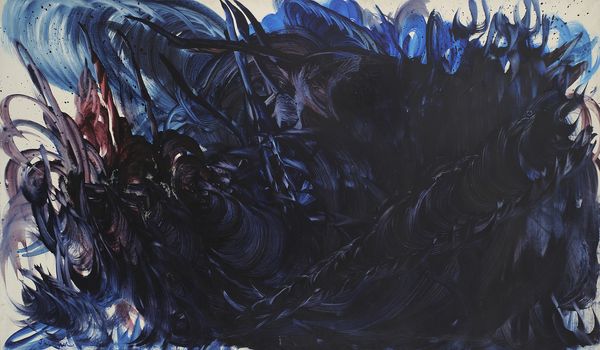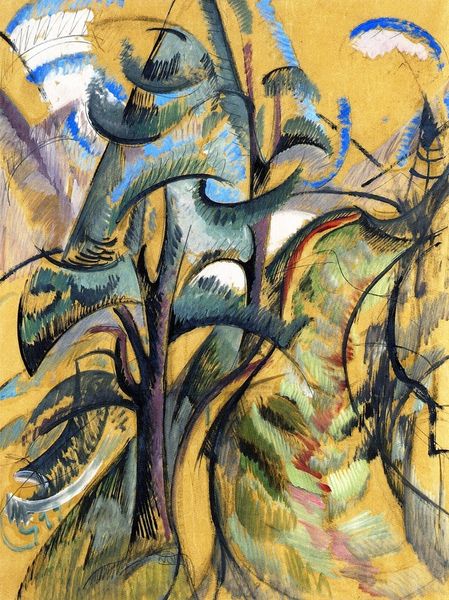
painting, acrylic-paint
contemporary
painting
acrylic-paint
figuration
acrylic on canvas
Dimensions: 140 x 160 cm
Copyright: Vasiliy Ryabchenko,Fair Use
Curator: Let’s spend some time looking at Vasiliy Ryabchenko's "Snake Woman," created in 1988. Editor: Oh, wow, there's a hypnotic, unsettling energy about this. It feels like a fever dream, a clash between the organic and something…alien. That blue figure, so strange against the backdrop. Curator: Exactly. Ryabchenko’s work often deals with the intersection of mythology, identity, and societal anxieties. Here, the figure, seemingly both human and reptilian, becomes a focal point for exploring those themes. I think the treatment of this woman demands to be investigated, perhaps in relation to the male gaze, for instance, which has often dehumanized women by depicting them as monsters or animals, or, more pointedly, as temptresses. Editor: I'm curious about the colours – that vibrant blue and intense yellow really pop! It creates this incredible push-pull dynamic. Is there a symbolic weight to these colour choices in Ryabchenko's broader body of work? It almost feels dystopian. Curator: Blue, often linked to the ethereal, can signal introspection and detachment. Juxtapose that against the yellow of what appears to be the earth, we get the tensions between the corporeal and otherworldly. As for dystopian, consider the historical moment: 1988, during a period of profound instability and crisis toward the end of Soviet Era and just prior to Ukraine declaring independence from the Soviet Union, in 1991. This may relate, however subliminally, to issues surrounding Ukrainian identity, alienation and a rupture with past representations. Editor: That's a strong counterpoint! For me, there's this alluring, uncanny valley vibe that draws me in. And also kind of repulses me if I’m honest. The strange angles and contours make her this powerful, unsettling symbol. This is how I would imagine Medusa preparing her hair with live snakes on each strand... she's sort of beautiful, but frighteningly so. Curator: I agree that its symbolism is purposefully difficult to nail down and might not even have an end-point. Considering mythological context can only carry our comprehension so far. Is it a monstrous distortion of femininity? Is she something powerful and alien that evades gender categorization as we know it? Editor: Well, I appreciate Ryabchenko holding back! This is a painting that’ll stay with me a long time... haunting my dreams, I think. Curator: Precisely. By destabilizing our preconceptions, Ryabchenko invites a re-evaluation of our contemporary socio-political moment.
Comments
No comments
Be the first to comment and join the conversation on the ultimate creative platform.
